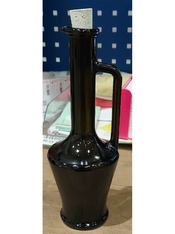Hello,
I‘ve recently bought film chemistry for the first time (1. Ilford Ilfotec LC29 (500ml), 2. Ilford Rapid Fixer (500ml), 3. Foma Fomacitro stop-bath (250ml), 4. Foma Wetting Agent Fotonal (250ml)). I‘ve also bought distiled water. I know that it might be too much chemicals as for the first time but for this topic I would like to ask for your recommendations on storing these chemicals. I‘ve chosen to store chemicals inside 3 different types of plastic containers (1. KAISER Collapsible bottles (1000ml) x3, 2. Jobo Wide-Neck bottles (1000ml) x3, 3. Unkown brand plastic bottle white (1000ml) x2). So I have 8 bottles in total to store chemistry and I really want to optimize the shelf-life of that chemistry as much as possible. I know that it‘s very important to reduce the air in these plastic containers since by doing it I can extend the shelf-life of chemistry but there are other things which are unclear to me.
Thank you!
I‘ve recently bought film chemistry for the first time (1. Ilford Ilfotec LC29 (500ml), 2. Ilford Rapid Fixer (500ml), 3. Foma Fomacitro stop-bath (250ml), 4. Foma Wetting Agent Fotonal (250ml)). I‘ve also bought distiled water. I know that it might be too much chemicals as for the first time but for this topic I would like to ask for your recommendations on storing these chemicals. I‘ve chosen to store chemicals inside 3 different types of plastic containers (1. KAISER Collapsible bottles (1000ml) x3, 2. Jobo Wide-Neck bottles (1000ml) x3, 3. Unkown brand plastic bottle white (1000ml) x2). So I have 8 bottles in total to store chemistry and I really want to optimize the shelf-life of that chemistry as much as possible. I know that it‘s very important to reduce the air in these plastic containers since by doing it I can extend the shelf-life of chemistry but there are other things which are unclear to me.
- 1. I‘ve read that storing distiled water in the refrigerator can extend it life, does it also apply to film chemistry? In my room the temperature is 23ºC / ~73ºF and Iford recommends to store chemicals at 5–20ºC so I‘m not sure if it‘s a good idea to store chemistry in the refrigerator.
- 2. Do I understand it right that there is no need to make stock solution when using Ilford Ilfotec LC29 developer because it‘s already high dilution liquid concentrate? Instead of it I should make 1+9 / 1+19 / 1+29 working solution once I open the bottle for the first time? If I‘m wrong then is it recommended to apply 1+3 formula (as with Ilfotec HC) to make a stock solution out of unopened bottle and only after that mix a working solution? Also if I‘m right then is it better to transfer the developer from the original bottle to the collapsible bottle since I‘ll probably won‘t use more than 50 ml of concentrated developer for working solution at once?
- 3. On Ilford photo web there is a technical information about ILFOTEC LC29 in which it‘s written that „ILFOTEC LC29 developer concentrate should keep in good condition for: 24 months in full tightly capped bottles, 4 months in half full tightly capped bottles“. In forums I‘ve read that mixed developers can last up to 6 months in full stopped bottles. Is full tightly / stopped means unopened bottle with no exceptions? Or is it possible to open that bottle for the first time and after making stock / working solution out of it still reach the state of full stopped bottle by collapsing the bottle for example?
- 4. I also want to ask about the Ilford Rapid fixer. What are your methods after opening fresh bottle? Do you dilute it only to working solution (if so is it 1+4?) only when you need to develop? Or are you making stock solution out of Ilford Rapid fixer at first? What was the longest shelf-life with your method?
Thank you!













